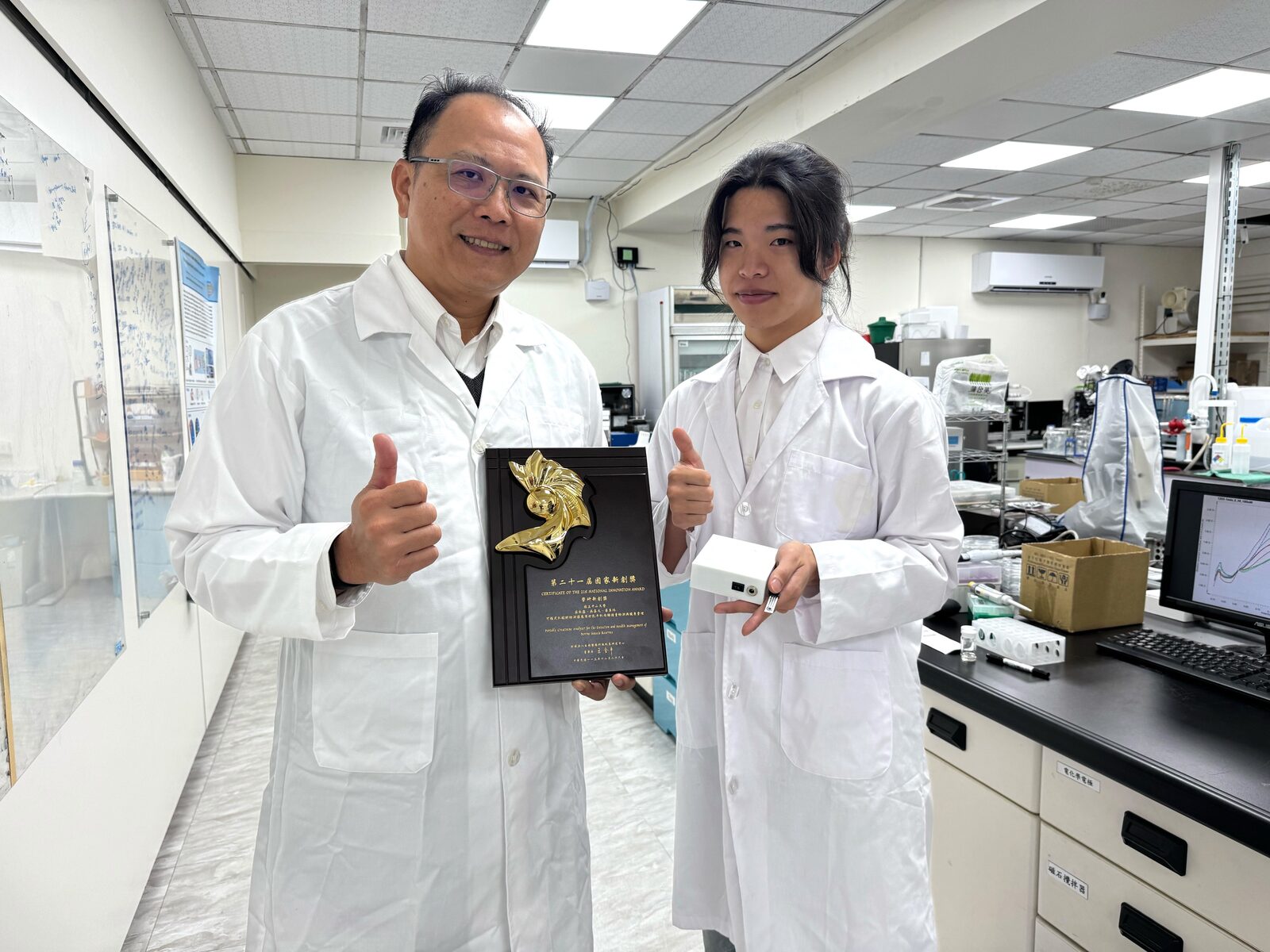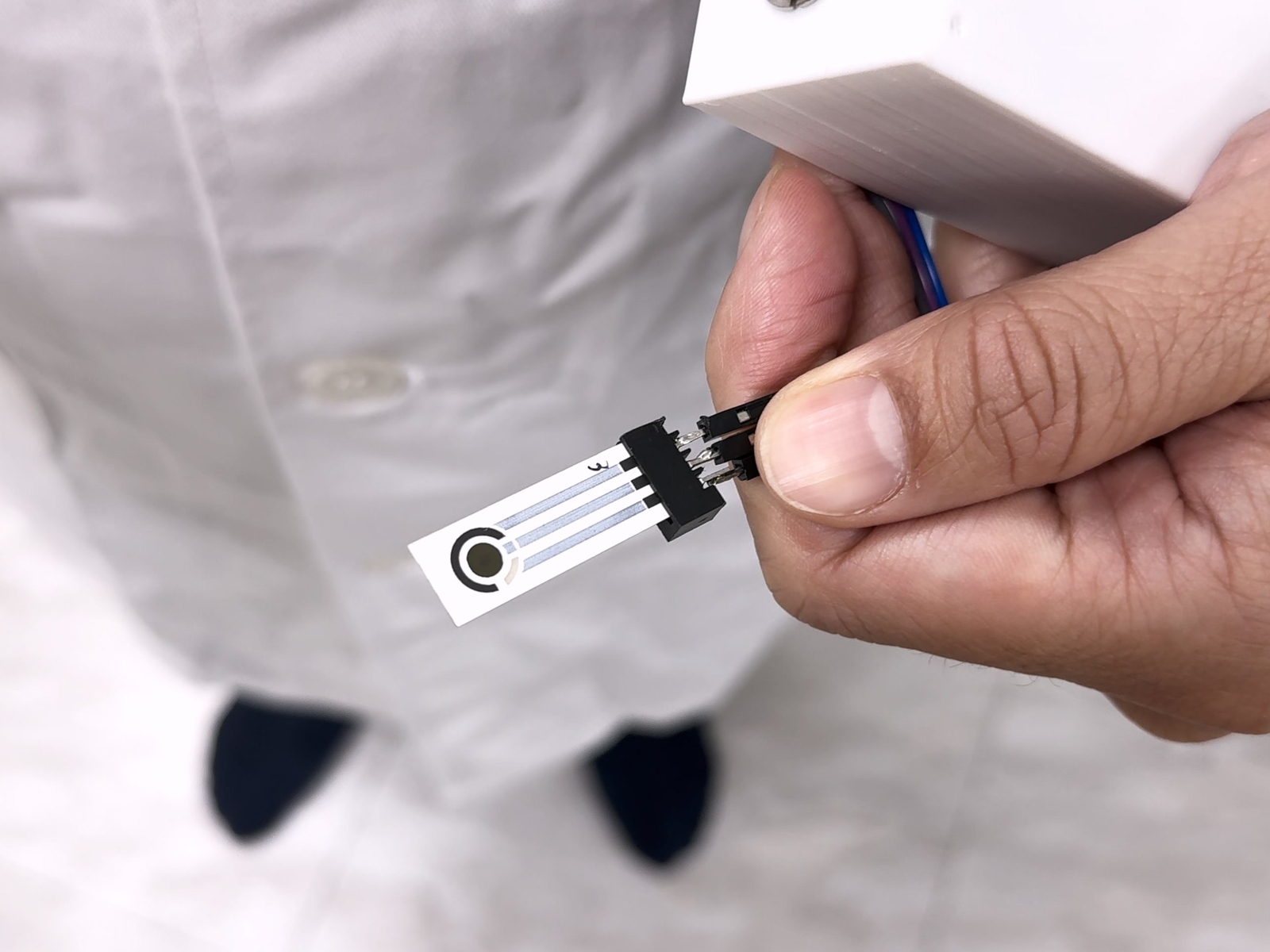One-minute rapid test boosts dairy production – NSYSU wins National Innovation Award



2025-03-25
The health of dairy bovines—whether they are robust or merely overweight—affects milk quality. A research team led by Professor Cheng-Hsin Chuang from the Institute of Medical Science and Technology at National Sun Yat-sen University (NSYSU) has developed a "portable creatinine analyzer" that can measure muscle mass in lactating bovines within just one minute. By enabling precise management, it is expected to enhance both milk yield and quality, potentially expanding a TWD 4.1 billion business opportunity for Taiwan's dairy industry and driving industrial transformation. This innovative breakthrough has been recognized with the "21st National Innovation Award" in the academic-research innovation category. In the future, the researchers aim to focus on health prevention for individuals suffering from sarcopenia.
In the dairy industry, a bovine's muscle reserves are positively correlated with its pregnancy count and milk production. However, traditional nutritional assessments rely solely on experts visually scoring body condition, making it difficult to distinguish between muscle mass and fat accumulation. There has been no real-time, effective method to monitor muscle reserves—until now. To address this gap, Professor Chuang's team collaborated with the National Health Research Institutes (NHRI) to develop a portable creatinine analyzer. This analyzer, combined with a disposable rapid test chip, can simultaneously measure creatinine concentrations in urine and serum, providing an accurate muscle reserve value in just one minute.
Professor Chuang explained that this innovation allows farmers to precisely monitor muscle reserves, detect muscle loss early, and obtain objective health data for timely assessments. This helps them make smarter livestock management decisions, adjust feed formulations, prevent transition period diseases, and ultimately increase milk yield—bringing significant economic benefits to the dairy industry. Currently, Taiwan has approximately 50,000 lactating bovines with an average pregnancy cycle of 2.6 calves per bovine. If the muscle reserve management system can successfully increase this to 2.9 calves per bovine, it would result in a 10% increase in milk production. Given that a lactating bovine produces an average of 30 kg of milk per day over a 305-day lactation period, this translates to an estimated TWD 4.1 billion economic impact.
The core innovation behind this technology lies in the use of zwitterionic coating on nanoparticles, which significantly enhances sensor specificity by precisely recognizing creatinine molecules while minimizing interference from other substances. This greatly improves detection sensitivity. Additionally, the compact and user-friendly design of the device makes it ideal for on-site use at dairy farms, overcoming the limitations of creatinine's short half-life (4.5 hours) and eliminating the need for serum samples to be sent to laboratories. This enables real-time rapid testing directly on farms, offering high specificity, stability, portability, and cost-effectiveness—giving it strong market potential.
This research achievement has not only won the "21st National Innovation Award" in the academic-research innovation category but has also been approved by the National Science and Technology Council for the "portable creatinine analyzer for the detection and health management of bovine muscle reserves." The device will soon move from the lab to the field, undergoing real-world testing on 20 to 30 lactating bovines to optimize the rapid test chip and develop a cloud-based management platform. Professor Chuang believes this technology has vast market potential—not only strengthening Taiwan's dairy industry but also tapping into the global market of 50 million lactating bovines. Furthermore, he envisions extending this innovation to human healthcare, providing a convenient home-based self-testing solution for sarcopenia prevention.
